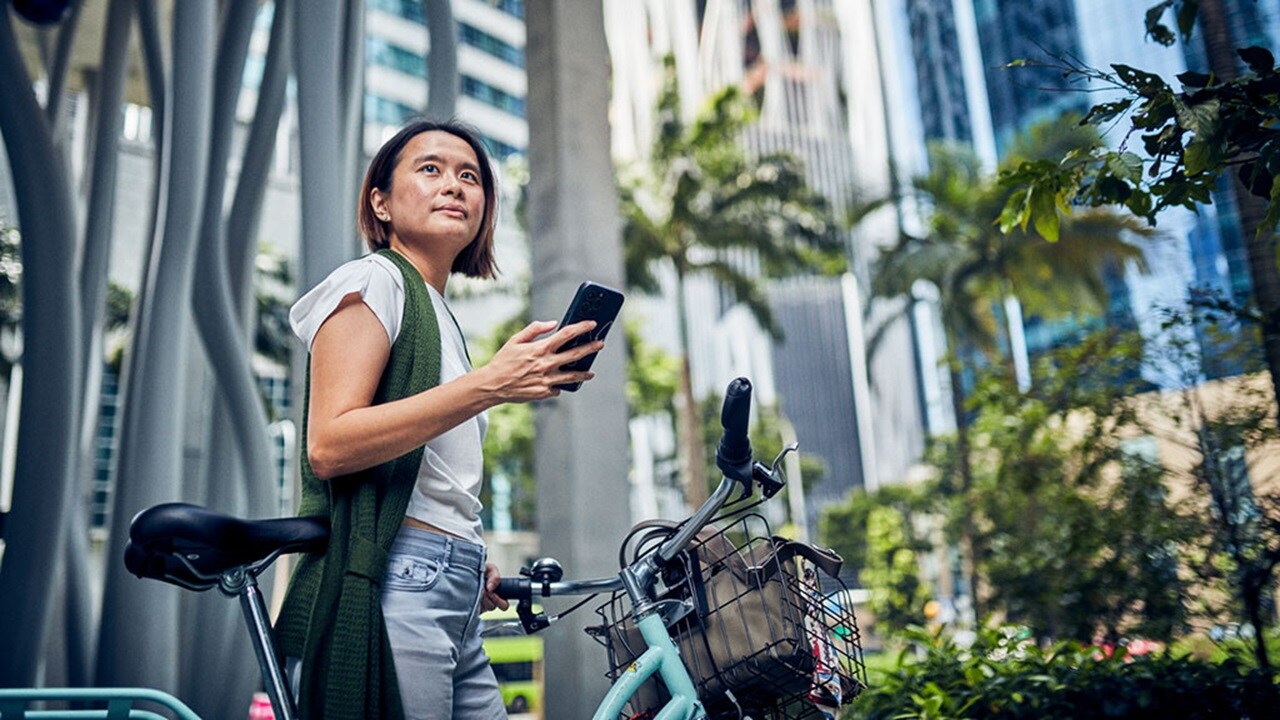The increased popularity and availability of ecommerce locations has led more and more consumers online and made online shopping second nature for most consumers. The global pandemic has naturally pushed more consumers online, where during Christmas peak season Irish An Post reported a 230% increase in parcels – 3.3 million parcels per week in 2020, compared to 1 million in the same period the year before.
While we hope pandemic days are long behind us, an uptake of online shopping seems to be here to stay, with ecommerce claiming a higher percentage of total retail sales year-over-year. Consequently, the global ecommerce logistics market is expected to double between 2020 and 2026 – going from 400 billion USD to 837 billion in just six years, and the demand for parcel deliveries will likely follow the accelerated growth rate.
A growth of this extent, together with increased consumer and business focus on decarbonisation, has led all stakeholders to considering alternative delivery solutions. While out-of-home delivery locations, such as Pick-up-Drop-off (PUDO) locations and parcel lockers, are not a recent innovation, they have recently been gaining popularity among businesses and consumers alike but are still to reach their full potential.
Delivery options: consumer readiness and perception
When looking at different delivery options, research by the International Post Corporation found the most used location was delivery at the door, used at least once in the past year by 88% of respondents. The following most used methods were delivery in the mailbox (78%), post office (55%), and postal service point (51%), while parcel lockers were used by less than half of the respondents (44%), even though they were the fourth most popular option when asked about consumer preferences.
While consumer readiness for out-of-home delivery options is high, their utilisation still has ways to go, due to low network density, sometimes high dwell times, and accessibility of other delivery options. “Each carrier has their own PUDO locations, at different distances from consumers’ homes, resulting in a network that is only as dense as the offering of that carrier,” says Guillermo Velasco, E-Commerce Product Manager at Maersk, “if a business can offer out-of-home delivery locations of multiple carriers, 8,000 locations can easily turn into 20,000, meaning higher coverage closer to consumers, which in turn results in increased adoption and satisfaction.”
When it comes to parcel lockers, dwell time – the total time that a parcel is stored in a locker compartment from deployment until effective pick-up – is arguably the most important factor for parcel operators when considering parcel lockers (IPC). While parcel shops don’t face the same restrictions in the number of packages they can receive, their opening times play a significant role in the amount of time it will take for the consumer to pick up their parcel.
Enabling and encouraging decarbonisation
While 85% of postal operators set greenhouse gas (GHG) emissions targets for their operations (European Commission), online shoppers don’t seem to share their view if it comes with an additional cost. Up to 25% of consumers indicate interest in low-impact delivery options, but less than 10% are willing to pay an extra price or tax to compensate for the negative impact of delivery (Oliver Wyman). Although GHG emissions from physical shopping are, on average, 2.3 times greater than emissions from e-commerce, online retailers can help facilitate the shift to lower GHG emission deliveries by implementing a couple of changes.
“If businesses can offer conveniently located out-of-home delivery points, they can influence consumer behaviour” says Velasco.
Because carriers often charge lower rates for PUDO deliveries than they do for home deliveries, online retailers can pass on the saving to their customer, eliminating additional charges and making the option more attractive for end consumers. Out-of-home deliveries can be up to five times more efficient per route than home deliveries, reducing the impact of delivery by minimising total driving miles, resulting in approximately 10% GHG emission reduction. Research suggests that by 2032, shifting to 100% PUDO delivery, even without the utilisation of electric vehicles, would result in emission reduction of 103g of CO2 per parcel. Combined with operational and financial efficiency, this can reflect positively on businesses’ GHG emissions bottom line and further decarbonisation goals.

How PUDO deliveries can increase consumer satisfaction
Businesses need to develop an understanding of their customers interest and willingness to use PUDO locations, and then find the right partner that will help them provide convenient options to consumers. Giving consumers more control over how their parcels are delivered, and to which locations, not only increases customer satisfaction, but also decreases instances of contacting customer service about package delivery times and locations.
The closer the delivery location to the consumers’ homes, the higher the satisfaction rates. But just how far are consumers willing to travel to collect their parcels? Recent research by the International Post Corporation (IPC) shows 81% of consumers are very satisfied or extremely satisfied if their pick-up point is within 100 metres from their door. The same level of satisfaction drops to 52% if PUDO locations are between 500 metres and 1 kilometre from the consumers’ door and decreases further to 43% with distances over 1 kilometre.
“We see that businesses using a multi-carrier PUDO approach are able to offer a wider range not only of PUDO locations, but also of opening times. This again has a favourable effect on consumer satisfaction as they can then select the location that suits their lifestyle and habits,” concludes Velasco.
By embracing a multi-carrier PUDO approach, businesses can amplify their delivery network, offer increased coverage and convenience to consumers, and support their decarbonisation goals. Providing an array of delivery options and strategically located PUDO points can enhance customer satisfaction, reduce GHG emissions, and help create a more flexible last mile environment. To start, businesses should prioritize understanding consumer preferences and collaborate with partners to establish a comprehensive network of PUDO locations, ultimately empowering customers with greater control over their delivery experience.
未来,您想随时了解必读行业趋势吗?
您已经完成了,欢迎“登船”!
出错了
未来,您想随时了解必读行业趋势吗?
使用此表格注册,即可直接在您的邮箱中接收我们的洞察见解,进入一个真正的综合物流世界。简单操作,即从我们为您量身定做的精选文章中获得启发,了解相关行业洞察信息。您可以随时取消订阅。

